REVIEW: Fujifilm X-T2 -The X-Series Camera We’ve Been Waiting For!
For the past three months I’ve been testing a
prototype of the latest addition to the X Series range, the Fujifilm X-T2. My role, along with the other X-Photographers
selected to test the new camera, is to put the camera through its paces and
report back to Fujifilm our findings.
The R&D Department back in Japan would then provide us with firmware
updates as we went along until the final production model is available to go on
sale.
There have been a lot of rumours and hype
surrounding this camera and I have to be honest, the hype has been
justified. The X-T2 is the best X Series
yet and one of the best cameras on the market in 2016. The X-Pro2 when it was launched in January
was a big step forward in terms of usability, performance and resolution,
building on the experience gained from the years of development and the feed
back received from a dedicated group of photographers around the world.
Now today Fujifilm can, at last, officially take
the wraps off the X-T2 and reveal to the world the latest X-Series camera aimed
at professional and enthusiast photographers alike.
This review is about my three months with the
X-T2 and how I found using it in the real world as a working photographer. It is not an in depth technical review of the
camera, this will be covered by sites and magazines dedicated to these sort of
articles.
Now with that out of the way, let me explain how
I found the X-T2 as a tool for me to do
my job. The main role for this camera is
in a sports environment, specifically shooting motorsport.
I received my prototype X-T2 back in April at
the FIA World Endurance Championship event at Silverstone. I have shot several
events with the X-T2 including at Spa-Francorchamps in Belgium, Imola in Italy
and, the big one, the 24 Hours of Le Mans.
At Le Mans my fellow X Photographers working in motorsport - John Rourke
(UK), Andrew Hall (AUS), Dirk Bogaerts (BEL), Jacky Ley (FRA) - all shot the
event with an X-T2 and I am sure their images will be made public in the coming
days and weeks.
I have also shot several personal projects on
the X-T2 alongside the X-Pro2 and X-T1 to give a back-to-back performance
review of the camera.
ERGONOMICS
The first thing you notice when picking up the
X-T2 is the small increase in size when compared with an X-T1. It is slightly
bigger in all departments. The layout of the X-T2 is very familiar to anyone
who has an X-T1, with the dials and switches in almost identical places. The only exception on the back of the camera
is the inclusion of a toggle switch and the Q menu button has moved to where
the Focus Assist button was on the X-T1. The Focus Assist is now on the rear
command dial, which is now pushable, like on the X-Pro2 and X-T10.
The removable battery grip is also bigger to
accommodate two NP-W126 batteries, with a third battery in the camera body, and the extra functions buttons, including a
secondary toggle switch and function and Q menu
buttons next to the shutter release.
The other obvious change is the ‘Normal / Boost’ selector switch that
increase the performance of the camera at the expenses of a slight increase in
power drain from the batteries. The grip
also comes with an extra piece to expand the handgrip.
I have seen several people speculating on forums
and social media that the X-T1 battery grip will fit the X-T2. I’m afraid that this is not true as the
tripod mount on the X-T1s base plate is in a different position to the one on
the X-T2 and the battery grip uses this screw point to attach to the camera.
On the top plate, the dials are taller to allow
them to be selected more easily. The ISO
and Shutter Speed dials have selectable locking mechanisms (see the two images above). When the button is pushed down the dial is
locked at the setting you have selected.
When the button is up the dial will rotate. This is a very good system for use in the
field.
The Exposure Compensation dial is +/- 3 stops,
like the X-T1, but also gains the X-Pro2s ‘C’ setting. This means the exposure compensation is set
by turning the front command dial and it is +/- 5 stops. There is no lock on this dial, but unlike the
dial on the X-Pro2, which sits proud of the camera body and is easily knocked,
the dial on the X-T2 sits slightly inboard as it is on the X-T1 and I haven’t
yet knocked the dial off the ‘C’ setting.
The shutter speed dial has an extra setting over
the X-T1, 1/8000s for the mechanical shutter, and an electronic shutter up to
1/32000.
The ISO dial goes from 200-12800 with L and H
settings - 100 on L and 25600 or 51200 on H, which is set in the menu. Like on the X-Pro2 all ISO settings can be
shot on RAW and JPEG.
Under the ISO dial is the drive selector, which
gains an extra selection, with the video function now on the drive dial, with
video start and stop on the shutter release.
Under the Shutter Speed dial the metering
selections also gets an extra setting.
The shutter release also has a thread for a
mechanical remote release like the X-Pro2.
One of the criticisms of the original X-T1 was
the D Pad buttons were not high enough and it made selecting the functions
difficult for some users. I never had a
problem with this but this problem has been rectified on the X-T2 with the D
Pad buttons more pronounced.
The X-T2 comes with two SD memory card slots
like the X-Pro2, but, unlike the X-Pro2, both slots can utilise the high speed
performance of the UHS II SD cards - only slot 1 on the X-Pro2 is set up for
use with the UHS II memory cards. This
means I don’t have to worry about the camera slowing down when writing to the
second card anymore.
One of the very few negative comments I made
about the X-Pro2 was the lack of an articulated LCD screen. Well that has been rectified with the X-T2,
which also goes one step further with the ability of the screen to tilt on the
portrait axis as well. This means you can
shoot landscape or portrait modes on the ground or above my head with ease and
I really like this additional flexibility this screen offers.
Another issue with the X-T1 was the rubber skin
on the camera and the fact it started to detach from the chassis over
time. Both my X-T1s suffered from this
and I am pleased to note the skin on the X-T2 seems to be much more
durable. I haven’t seen any problem with
my prototype X-T2 despite some heavy usage over the past three month.
AUTO FOCUS PERFORMANCE
Over the past three months I have used the X-T2
to shoot motorsport, wildlife and landscapes and the camera has performed above
expectations, especially with regards to AF performance. In this regard the X-Pro2 pointed the way
when I shot international rugby at Murrayfield and motorsport at Paul Ricard
and Silverstone.
The X-Pro2 proved that Fujifilm had developed an
AF system that was ideal for sports and wildlife photography. Well I am happy to report that the AF system
on the X-T2 is even better! I have been
tracking sportscars at speeds in excess of 200mph and birds in flight with
ease.
One of the new features of the X-T2 is the AF-C
Custom settings with five presets and one custom setting depending on the type
of subject you are shooting. The five presets
are 1. Multi purpose 2. Ignore obstacles
3. Accelerating / Decelerating subject 4. Suddenly Appearing
Subject 5. Erratically Moving Subject. Set 6 is a custom function where you can
change the tracking sensitivity, speed tracking sensitivity and zone area
switching.
For motorsport I have found Set 3 to be perfect
and the system works extremely well.
The X-T2 has 325 focus points compared to the
273 on the X-Pro2, this drops to 91 if Zone Focus is selected.
11 AND 14 FRAMES PER SECOND
The new drive mode of 11fps is very usable and
with the camera set to AF-C I was able to follow focus a car through the final
set of corners at Le Mans and take 26 images all perfectly sharp. T
The X-T2 has a headline figure of 14fps with the
Electronic Shutter selected. Now in the
past the Electronic Shutter has produced some strange results when shooting a
moving subject and for my work I have shied away from using the ES. I did do a trial at Le Mans and I have to
report the results were much better on the X-T2 than previously on the X-T1s ES
but I prefer to stick to the Mechanical Shutter, which is more usable now that
we have 1/8000s. To be honest 8fps is
more than adequate for my needs and 11fps is useful when needed. I can select 11fps at the touch of a function
button!
The CL drive also gets an upgrade with the photographer being able to choose between 3, 4 and 5 fps.
IMAGE QUALITY
Well the X-T2 uses the same 24MP X-Trans III
sensor that was first seen in the X-Pro2 and the results I have been getting
from the prototype X-T2 are just superb.
The image quality is the reason I switched to the X-Series and the
results are exactly what I expected.
I need to point out that the X-T2 I have been
using for the past three months is a pre production prototype so the quality
may even improve when the production model is received. But I am extremely happy with the results I
have been getting with this camera and to be honest I don’t see how Fujifilm
can improve on the images I have been producing.
As usual I shoot RAW + JPEG, with the film
simulation set to Velvia. I also use
ACROS for black and white images and I am pleased to say that this film
simulation has found its way on to the X-T2.
The 24MP sensor has one advantage that shouldn’t
be overlooked and that is the ability to crop in post production. When shooting fast moving action sometimes
the composition of the final image is not exactly perfect and can be improved
by cropping the image. With a 6000 x 4000 pixel image you have more manoeuvring
room than you do with the X-T1s 4896 x 3264 pixel sensor. In fact almost all the X-T2 images I’ve
cropped to improve the composition are still substantially larger than the 16mp
output of the X-T1.
VIDEO
I use the video mode my X-Pro2 and X-T1 for
shooting driver interviews and press conferences but recently I have been
experimenting shooting action with the X-T2.
The 4K video is superb and with the improved AF action is very easy to
shoot, with the results looking great on the 4K screen I have on my
computer. I will admit I am a stills
photographer not a videographer, so the small issues I have had with the video
mode on the X-T2 are more down to user error than the camera. With the increased functionality of the video
on the X-T2 I can see me shooting more moving images from now on.
WEATHER RESISTANCE
For a sports photographer having confidence that
your gear will stand up to the conditions is a must and I pleased to report
that the X-T2 has shrugged off everything that the weather has thrown at
it. I do try to keep the cameras covered
in heavy rain but it is sometime inevitable that you have to shoot when the
heavens have opened. I know from first
hand experience that the WR on the lens and body means I can keep shooting with
confidence.
CONCLUSION
Well the results speak for themselves. The X-T2 has been my ‘go to’ camera for
nearly three months and is a superb working tool for me as a sport, wildlife
and landscape photographer.
The inevitable question is going to be is it
that big a step up from the X-T1 to justify the extra expense?
For me it is a no brainer, the X-T2 is a huge
step forward in terms of performance over the X-T1 in every area. If you don’t need the improved AF
performance, 11 fps, 4K video and a 24MP sensor then the X-T1 is still a
fantastic camera and I will be keeping mine for the foreseeable future.
However with the X-T2, the X-Pro2 and the ever
expanding range of Fujinon lenses, Fujifilm X-Series now has the camera line up
to compete with the very best from the rival manufacturers.
-------------------------------------------------------------------------------------------------------------
MacLean Photographic run Workshops in East Lothian and the Borders of Scotland. CLICK HERE for more details and availability
Jeff Carter is an Official Fujifilm X Photographer and was named as a Fujifilm brand ambassador in June 2015. In 2016 he worked with the company on the launches of the Fujifilm X-Pro2 in Tokyo and the Fujifilm X-T2 in Paris in July 2016. You can view his profile and gallery on the Fujifilm website HERE











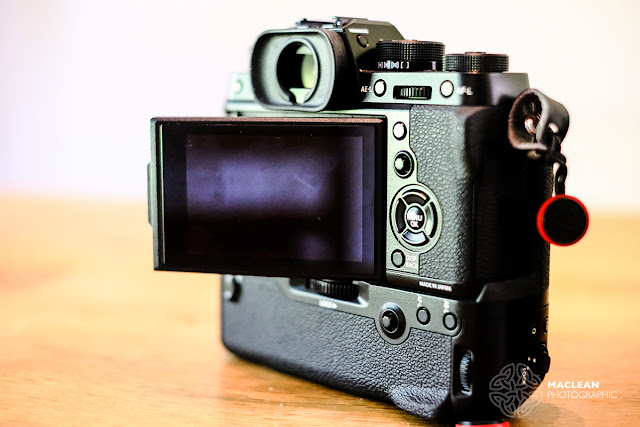










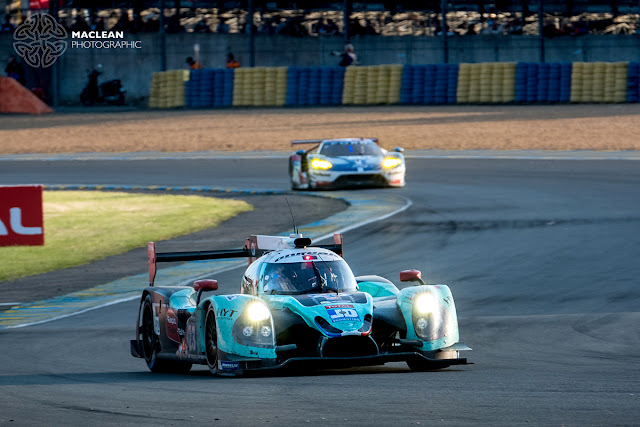
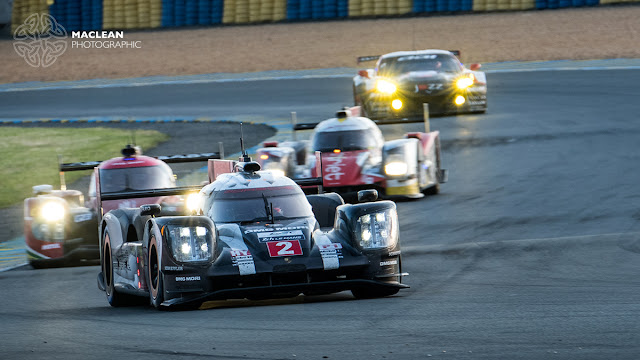
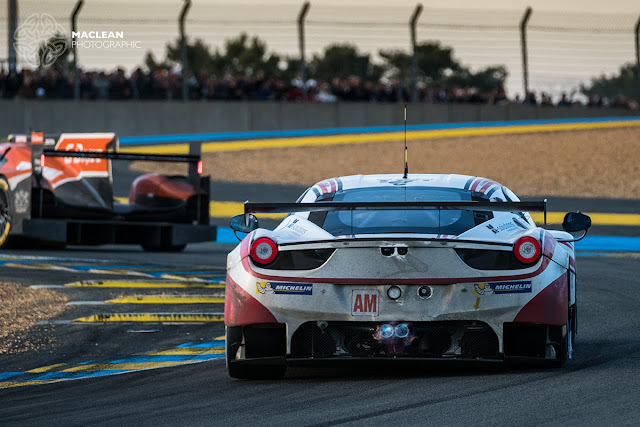

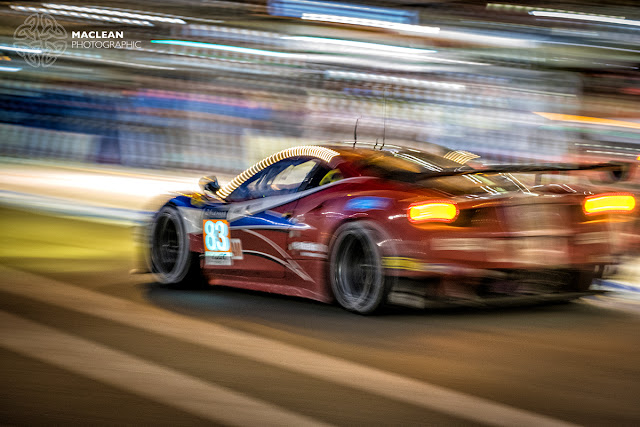















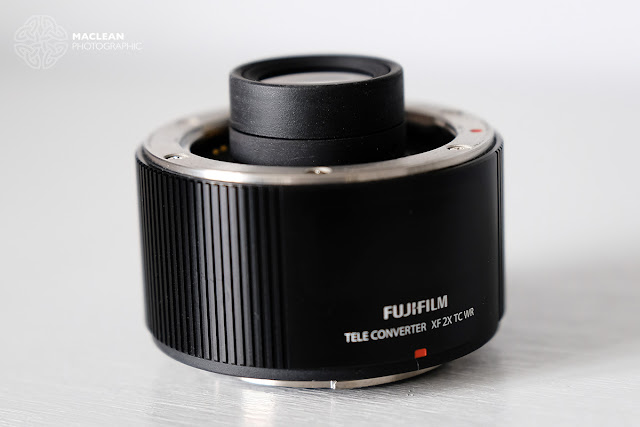
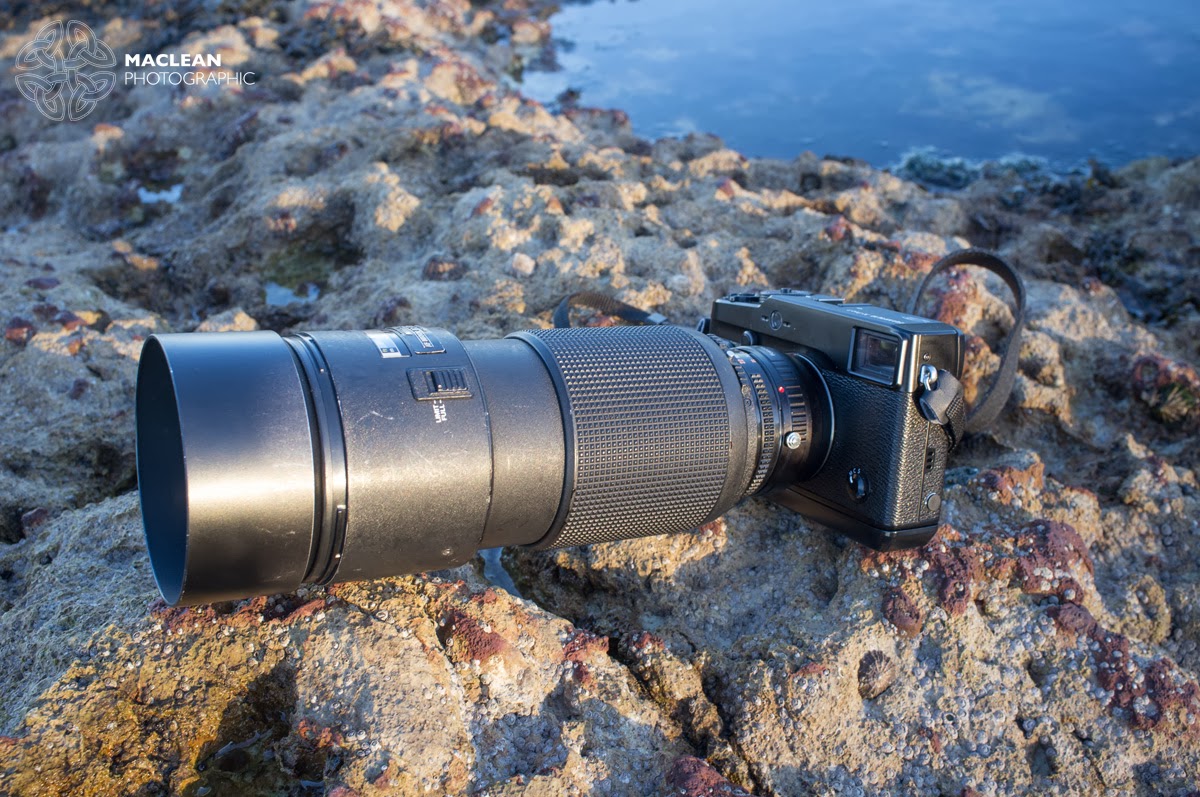
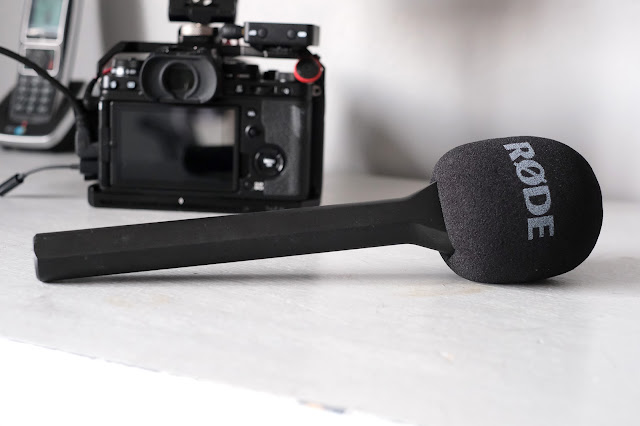
Great review Jeff, very useful thanks. The AF-C Custom settings and CL drive settings are both unexpected bonuses - well I didn't expect them anyway. Just pre-ordered! I seem to have gone from a cupboard full of Nikons to one starting to get full of Fujis.
ReplyDeleteThank you Gary.
DeleteProbably the most useful review I've seen - things like the better skin aren't mentioned anywhere else. Good job.
ReplyDeleteThanks Ian and the skin on the X-T2 is a definite improvement on the X-T1
DeleteLove the Le Man's pic's Jeff did wonder if you'd have an XT2 there! Looks a better of a camera!!!
ReplyDeleteYes Chris I had one on me for the entire week but had to keep it under wraps when shooting with it.
DeleteGreat review! I have used my X-T1 for almost 2 years, and love the camera. But, the rubber skin has been replaced by Fuji 3 times, and detract from what I love about the camera. Glad to hear that the X-T2 appears to have solved the issue. Consequently, my reason for having placed my pre-order for the new body.
ReplyDeletethanks,
Kirkmac, the skin on the X-T2 is a definite improvement on the X-T1. I only had to replace the skin on one of my X-T1s but I know your frustration. Fujifilm are definitely listening to the feedback they receive.
DeleteIt is indeed commendable that Fujifilm extensively tests its pre production model with several renowned photographers before offering it to lesser mortals (!) like me. Having said that ,the deficiencies in the ergonomics of XT1, such as the squishy and very difficult to press cross keys in the back , the ISO dial frequently displacing the drive dial are some glaring deficiencies which has proven to be very inconvenient to users like me. I wonder why even after extensive testing the design change required or even in this case necessitated has not been recommended to Fuji.
ReplyDeleteI can understand that recommending changes in the sensor or other technical components might not have been under the purview of the evaluators as it would have a cost and other ramifications. But users like me would have been only happy if some essential design changes like what had been cited above could have been recommended and implemented in the XT1 itself. These are the things which the users are inconvenienced every time they use the camera and in my opinion is major deficiency ( again, because you encounter the problem every time you pick up the camera ) in an otherwise fantastic camera and lenses.And the irony is that this is something so basic that everybody who uses the XT1 has experienced and commented upon.There is no point offering a fantastic dial based camera when by using it the convenience is nullified by an inconvenience it causes.
Fuji have themselves said it is not correct of any manufacturer to expect the customer to change their higher end cameras every two years.That being the case we would all been happier that this fact had been highlighted by the experts and implemented in the XT1 itself
No criticism intended as all the X Photographers are geniuses who are to be greatly respected and admired , but it is just that non professionals like us would really not like or even afford to change cameras for reasons such as these ,which in the first place could have been avoided,but unfortunately begs a change for the great inconvenience it creates.
I have invested heavily in the Fuji system with the XT1, XE2 and 9 lenses so I am atleast qualified to comment, I guess !!
Great post! Thanks for sharing. I like Classic finishing’s, high functionality, and compact design of Fujifilm's X Series, this cameras is very good for photography.
ReplyDeleteI am using XT3 - WITH 16/50, 2.8 10/24, F4, 50/ 140 , 2.8
ReplyDeletebut in jaipur scarves is very poor ,